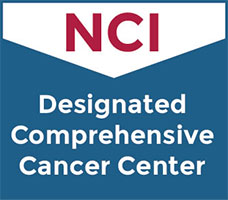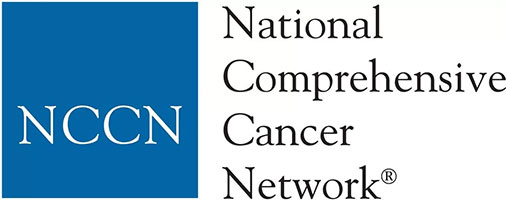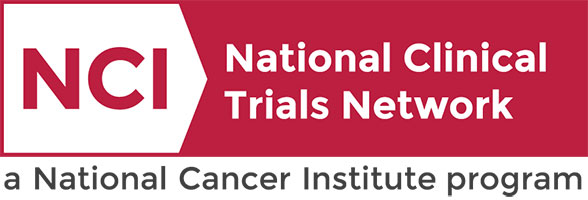Study of Selinexor in Combination With Ruxolitinib in Myelofibrosis
Study of Selinexor in Combination With Ruxolitinib in Myelofibrosis
This is a global, multicenter Phase 1/3 study to evaluate the efficacy and safety of
selinexor plus ruxolitinib in JAK inhibitor (JAKi) treatment-nave myelofibrosis (MF)
participants. The study will be conducted in two phases: Phase 1 (open-label) and Phase 3
(double-blind). Phase 1 (enrollment completed) was an open-label evaluation of the safety and
recommended dose (RD) of selinexor in combination with ruxolitinib and included a dose
escalation using a standard 3+3 design (Phase 1a) and a dose expansion part (Phase 1b). In
Phase 3, JAKi treatment-nave MF participants are enrolled in 2:1 ratio to receive the
combination therapy of selinexor + ruxolitinib or the combination of placebo + ruxolitinib.
selinexor plus ruxolitinib in JAK inhibitor (JAKi) treatment-nave myelofibrosis (MF)
participants. The study will be conducted in two phases: Phase 1 (open-label) and Phase 3
(double-blind). Phase 1 (enrollment completed) was an open-label evaluation of the safety and
recommended dose (RD) of selinexor in combination with ruxolitinib and included a dose
escalation using a standard 3+3 design (Phase 1a) and a dose expansion part (Phase 1b). In
Phase 3, JAKi treatment-nave MF participants are enrolled in 2:1 ratio to receive the
combination therapy of selinexor + ruxolitinib or the combination of placebo + ruxolitinib.
Hematologic,
Phase I
Phase I/III
Adults
Mol. targeted/Immunotherapy/Biologics
Ruxolitinib,
Selinexor (KPT-330),
Selinexor or Placebo
Mohan, Sanjay
International
Vanderbilt University
08-09-2021
Eligibility
18 Years
BOTH
NO
Inclusion Criteria:
A diagnosis of primary MF or post-essential thrombocythemia (ET) or postpolycythemia- vera (PV) MF according to the 2016 World Health Organization (WHO) classification of MPN, confirmed by the most recent local pathology report.
Measurable splenomegaly during the screening period as demonstrated by spleen volume of greater than or equal to (>=) 450 cubic centimeter (cm^3) by MRI or CT scan (results from MRI or CT imaging performed within 28 days prior to screening are acceptable).
Participants with international prognostic scoring system (DIPSS) risk category of intermediate-1, or intermediate-2, or high-risk.
Participants >=18 years of age.
Eastern Cooperative Oncology Group (ECOG) Performance Status less than or equal to (=) 2.
Platelet count >= 100*10^9/liter (L) without platelet transfusion.
Absolute neutrophil count (ANC) >=1.0 *10^9/L without need for growth factors within 7 days prior to C1D1.
Adequate liver function as defined by the following: aspartate transaminase (AST) and alanine aminotransferase (ALT) = 2.5*upper limit normal (ULN) and serum total bilirubin = 2 ULN.
Calculated creatinine clearance (CrCl) greater than (>) 15 milliliters per minute (mL/min) based on the Cockcroft and Gault formula.
Participants with active hepatitis B virus (HBV) are eligible if antiviral therapy for hepatitis B has been given for > 8 weeks and the viral load is less than () 100 international units/milliliter (IU/mL).
Participants with history of hepatitis C virus (HCV) are eligible if they have received adequate curative anti-HCV treatment and HCV viral load is below the limit of quantification.
Participants with history of human immunodeficiency virus (HIV) are eligible if they have CD4+ T-cell counts >= 350 cells/microliter (cells/mcL), negative viral load, and no history of acquired immunodeficiency syndrome (AIDS)-defining opportunistic infections in the last year and should be on established antiretroviral therapy (ART) for at least 4 weeks.
Female participants of childbearing potential must have a negative serum pregnancy test at screening and within 3 days prior to first dose on C1D1 and agree to use highly effective methods of contraception throughout the selinexor treatment period and for 90 days following the last dose of selinexor treatment. A woman is considered of childbearing potential, i.e., fertile, following menarche and until becoming post-menopausal unless permanently sterile. Permanent sterilization methods include hysterectomy, bilateral salpingectomy and bilateral oophorectomy. A postmenopausal state is defined as no menses for 12 months without an alternative medical cause.
Male participants who are sexually active must use highly effective methods of contraception throughout the study treatment period and for 90 days following the last dose of selinexor treatment. Male participants must agree not to donate sperm during the study treatment period and for at least 90 days after the last dose of selinexor treatment.
Participants must sign written informed consent in accordance with federal, local, and institutional guidelines.
Active symptoms of MF as determined by presence of at least 2 symptoms with a score >=3 or total score of >= 10 at screening using the Myelofibrosis Symptom Assessment Form (MFSAF) V4.0.
Participant currently not eligible for stem cell transplantation.
Participants must provide bone marrow biopsy samples (samples obtained up to 3 months prior to C1D1 are permitted) at screening and during the study.
Life expectancy of greater than 6 months in the opinion of the investigator.
Participants with no other concomitant malignancies or history of another malignancy within 2 years prior to C1D1 except for adequately treated early-stage basal cell or squamous cell carcinoma of skin, adequately treated carcinoma in situ of breast or cervix or organ confined prostate cancer, or PV or ET.
Exclusion Criteria:
More than 10% blasts in peripheral blood or bone marrow (accelerated or blast phase).
Previous treatment with JAK inhibitors for MF.
Previous treatment with selinexor or other XPO1 inhibitors.
Impairment of gastrointestinal (GI) function or GI disease that could significantly alter the absorption of selinexor (e.g., vomiting or diarrhea > CTCAE v 5.0 Grade 1).
Received strong cytochrome P450 3A (CYP3A) inhibitors = 7 days prior to selinexor dosing OR strong CYP3A inducers = 14 days prior to selinexor dosing (Phase 1 participants only)
Major surgery 28 days prior to C1D1.
Uncontrolled (i.e., clinically unstable) infection requiring parenteral antibiotics, antivirals, or antifungals within 7 days prior to C1D1; however, prophylactic use of these agents is acceptable (including parenteral).
Any life-threatening illness, medical condition, or organ system dysfunction which, in the Investigator's opinion, could compromise the participants safety, prevent the participant from giving informed consent, or being compliant with the study procedures, or confound the ability to interpret study results.
Female participants who are pregnant or lactating.
Prior splenectomy, or splenic radiation within 6 months prior to C1D1.
Unable or unwilling to undergo CT scan or MRI per protocol.
Participants with contraindications or known hypersensitivity to selinexor or ruxolitinib or excipients.
History of pulmonary hypertension.
History of myocardial infarction, unstable angina, percutaneous transluminal coronary angioplasty (PTCA) or coronary artery bypass graft (CABG), cerebrovascular accident (stroke or transient ischemic attack [TIA]), ventricular arrhythmias, congestive heart failure New York Heart Association (NYHA) class > 2 within 6 months of C1D1.
Participants unable to tolerate two forms of antiemetics prior to each dose for at least 2 cycles.
A diagnosis of primary MF or post-essential thrombocythemia (ET) or postpolycythemia- vera (PV) MF according to the 2016 World Health Organization (WHO) classification of MPN, confirmed by the most recent local pathology report.
Measurable splenomegaly during the screening period as demonstrated by spleen volume of greater than or equal to (>=) 450 cubic centimeter (cm^3) by MRI or CT scan (results from MRI or CT imaging performed within 28 days prior to screening are acceptable).
Participants with international prognostic scoring system (DIPSS) risk category of intermediate-1, or intermediate-2, or high-risk.
Participants >=18 years of age.
Eastern Cooperative Oncology Group (ECOG) Performance Status less than or equal to (=) 2.
Platelet count >= 100*10^9/liter (L) without platelet transfusion.
Absolute neutrophil count (ANC) >=1.0 *10^9/L without need for growth factors within 7 days prior to C1D1.
Adequate liver function as defined by the following: aspartate transaminase (AST) and alanine aminotransferase (ALT) = 2.5*upper limit normal (ULN) and serum total bilirubin = 2 ULN.
Calculated creatinine clearance (CrCl) greater than (>) 15 milliliters per minute (mL/min) based on the Cockcroft and Gault formula.
Participants with active hepatitis B virus (HBV) are eligible if antiviral therapy for hepatitis B has been given for > 8 weeks and the viral load is less than () 100 international units/milliliter (IU/mL).
Participants with history of hepatitis C virus (HCV) are eligible if they have received adequate curative anti-HCV treatment and HCV viral load is below the limit of quantification.
Participants with history of human immunodeficiency virus (HIV) are eligible if they have CD4+ T-cell counts >= 350 cells/microliter (cells/mcL), negative viral load, and no history of acquired immunodeficiency syndrome (AIDS)-defining opportunistic infections in the last year and should be on established antiretroviral therapy (ART) for at least 4 weeks.
Female participants of childbearing potential must have a negative serum pregnancy test at screening and within 3 days prior to first dose on C1D1 and agree to use highly effective methods of contraception throughout the selinexor treatment period and for 90 days following the last dose of selinexor treatment. A woman is considered of childbearing potential, i.e., fertile, following menarche and until becoming post-menopausal unless permanently sterile. Permanent sterilization methods include hysterectomy, bilateral salpingectomy and bilateral oophorectomy. A postmenopausal state is defined as no menses for 12 months without an alternative medical cause.
Male participants who are sexually active must use highly effective methods of contraception throughout the study treatment period and for 90 days following the last dose of selinexor treatment. Male participants must agree not to donate sperm during the study treatment period and for at least 90 days after the last dose of selinexor treatment.
Participants must sign written informed consent in accordance with federal, local, and institutional guidelines.
Active symptoms of MF as determined by presence of at least 2 symptoms with a score >=3 or total score of >= 10 at screening using the Myelofibrosis Symptom Assessment Form (MFSAF) V4.0.
Participant currently not eligible for stem cell transplantation.
Participants must provide bone marrow biopsy samples (samples obtained up to 3 months prior to C1D1 are permitted) at screening and during the study.
Life expectancy of greater than 6 months in the opinion of the investigator.
Participants with no other concomitant malignancies or history of another malignancy within 2 years prior to C1D1 except for adequately treated early-stage basal cell or squamous cell carcinoma of skin, adequately treated carcinoma in situ of breast or cervix or organ confined prostate cancer, or PV or ET.
Exclusion Criteria:
More than 10% blasts in peripheral blood or bone marrow (accelerated or blast phase).
Previous treatment with JAK inhibitors for MF.
Previous treatment with selinexor or other XPO1 inhibitors.
Impairment of gastrointestinal (GI) function or GI disease that could significantly alter the absorption of selinexor (e.g., vomiting or diarrhea > CTCAE v 5.0 Grade 1).
Received strong cytochrome P450 3A (CYP3A) inhibitors = 7 days prior to selinexor dosing OR strong CYP3A inducers = 14 days prior to selinexor dosing (Phase 1 participants only)
Major surgery 28 days prior to C1D1.
Uncontrolled (i.e., clinically unstable) infection requiring parenteral antibiotics, antivirals, or antifungals within 7 days prior to C1D1; however, prophylactic use of these agents is acceptable (including parenteral).
Any life-threatening illness, medical condition, or organ system dysfunction which, in the Investigator's opinion, could compromise the participants safety, prevent the participant from giving informed consent, or being compliant with the study procedures, or confound the ability to interpret study results.
Female participants who are pregnant or lactating.
Prior splenectomy, or splenic radiation within 6 months prior to C1D1.
Unable or unwilling to undergo CT scan or MRI per protocol.
Participants with contraindications or known hypersensitivity to selinexor or ruxolitinib or excipients.
History of pulmonary hypertension.
History of myocardial infarction, unstable angina, percutaneous transluminal coronary angioplasty (PTCA) or coronary artery bypass graft (CABG), cerebrovascular accident (stroke or transient ischemic attack [TIA]), ventricular arrhythmias, congestive heart failure New York Heart Association (NYHA) class > 2 within 6 months of C1D1.
Participants unable to tolerate two forms of antiemetics prior to each dose for at least 2 cycles.


